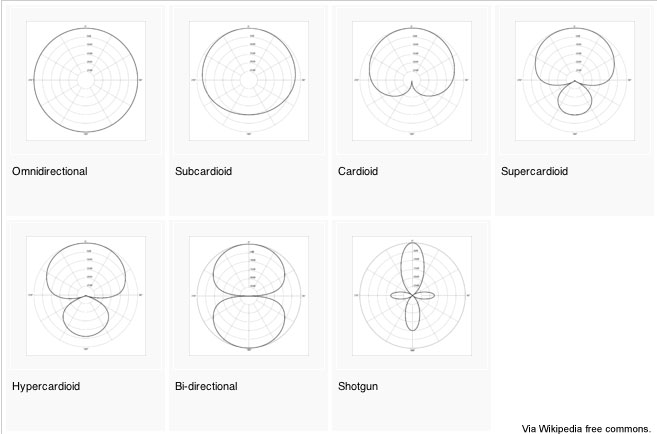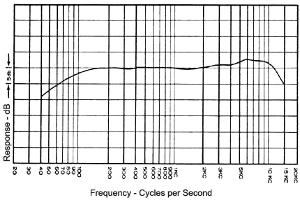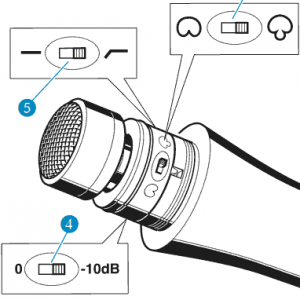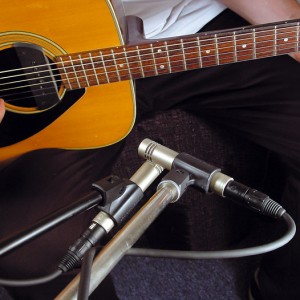Music Production – Microphones
When creating a song from scratch, whether in a studio or at home, and need real instruments or vocals in your mix, microphone choice can make a real difference to the outcome of your track. There are a huge array of microphones out for sale, it can be hard to choose between them. Each microphone exceeds in its own field. Some pickup up higher/lower frequencies, some have a flat frequency response, some are able to handle high SPLs, some give warmth to the sound, and some are more sensitive.
Most microphones fit into one of three categories – Condenser, Dynamic and Ribbon:
Condenser require 48v Phantom Power, usually supplied from the mixing console. They are more expensive and very delicate. Normally provide a flat frequency response. No wire mesh means plosives are picked up, an external pop shield is needed.
Dynamic, more robust and cheaper. Wire mesh reduces wind noise and plosives
Polar Pickup Pattern is the area within a space the microphone will pickup. Some microphones will have a switch to be able to adjust their pickup pattern, whereas some aren’t adjustable. Cardioid, omni-directional, bi-directional are the most common pickup patterns found on microphones.
In simple, cardioid is a common pattern for picking a single source placed in front of the microphone. It does not pickup sound from behind the microphone, which is useful to reduce background noise, spill and natural reverb.
Omni-directional picks up sound from all directions, which is useful when there are multiple sources of sound, or natural reverb is desired.
Bi-directional picks up sound just from in-front and behind the microphone, which is useful when there are two vocalists.

For most instruments a distance of 4-6 inches is common, however when mic’ing an amplifier the mic is placed as close to the amp as physically possible, without touching the grill.
Positioning is important, to ensure the mic picks up as much of the sound as possible, to gain a reproduction as close to the original sound as possible, whilst reducing any noise from other instruments, spill, or natural reverb.
 Frequency response within a microphone refers to the range of frequencies a microphone will respond to. This is used to ensure the microphone picks up the sound of the instrument, and reduces other sounds. A flat frequency response means the microphone responds to all frequencies evenly.
Frequency response within a microphone refers to the range of frequencies a microphone will respond to. This is used to ensure the microphone picks up the sound of the instrument, and reduces other sounds. A flat frequency response means the microphone responds to all frequencies evenly.
Microphone Sensitivity, is how well the microphone responds to the input level. When recording quiet sounds, a high sensitivity is needed. Whereas, recording loud sound, low sensitivity is required.
Most popular studio microphones will connect via XLR to the mixing console, however cheaper microphones aimed at home use connect via USB.
 Other than pickup pattern switches, you may find a PAD switch. This reduces the input signal by 10-20dB, used when working with loud sound. HPL (High Pass Filter) switch is used to remove all sound input below a certain frequency. This is useful when overhead mic’ing cymbals to reduce the sound of the bass drum, for example.
Other than pickup pattern switches, you may find a PAD switch. This reduces the input signal by 10-20dB, used when working with loud sound. HPL (High Pass Filter) switch is used to remove all sound input below a certain frequency. This is useful when overhead mic’ing cymbals to reduce the sound of the bass drum, for example.
 Stereo Mic’ing is the process of using two identical microphones to increase the impact of the sound and give a sense of scale to the instrument. For example:
Stereo Mic’ing is the process of using two identical microphones to increase the impact of the sound and give a sense of scale to the instrument. For example:
An acoustic guitar produces different sound on the body to the neck
A piano left and right, for left and right key pickup
An amp, front and back of the cabinet
Snare drum, top and bottom of the skin
Over head microphones
Phase Cancellation must be considered when stereo mic’ing to ensure the two microphones don’t cancel each other out.
In summary, there is no one type of microphone that suits all, it depends on what you are recording and your desired outcome is, however a list of popular studio microphones and there application is provided here.